Don't call us, we'll call you (en)
Xaveer De Geyter Netwerk Gallerij Handleiding 00-01
In ‘Allotment Athletica’ (1) by 51N4E the allotment’s prevailing idiosyncrasy - juxtaposition of fantasy - is almost entirely approved of. Only the pipe-bowl, the traditional representation of the ‘res publica’ in this type of dwelling, has been replaced by a stale athletics track. This equally practical and surrealistic injection shatters the snug allotment, modifies its identity and drastically changes the proportions of the area. This allotment no longer represents a mere addition of individual entities with an absolute minimum of communality. First and foremost we are dealing with a manifestly public location.
An unbidden pavilion (2), which is nevertheless liable to mass production, represents yet another key project the collective has enrolled in. It is based on the legal principle that for every structure smaller than 21m2 a construction permit is not required. The largest variant measures exactly 21m2 and although it is given a definite Berlaymont-like shape, the object can be adapted to various situations. According to the patron’s, or rather the client’s demand, it can serve as a veranda, a chalet, a large piece of furniture, an isolating cell, an office or a mini-lounge. It can be appended, suspended, encased, or independently mounted and it can take a poetic or a straightforward shape.
The architect’s traditional role is wasted on the members of 51N4E. Their fellow craftsmen frequently and conceitedly fence off the outside world and coop up in a cocoon of aestheticism. They have learnt nothing from the commerce’s omnipresence and its marketing strategies. They don’t cope with the reality they are surrounded by, but create a small, detached world, which preferably will never be affected by the surrounding triviality. And if the outside world does rouse their interest, they don’t dispose of the armamentarium to assimilate it. Finally, they are exclusively orientated towards architecture and construction, even in situations where this is subordinate and inessential.
The 51N4E architects start from these observations. In the first place their ‘oeuvre’ consists of a series of all sorts of candid strategies which cope with a rather uncontrollable reality. They are masters in the avoidance of inevitable regularities and when they fail in this these regularities are turned to their own advantage. They persuasively succeed in dispelling certainties and in other cases they merely reduce reality. Their armamentarium includes upgrading, copying, branding, restyling, transposition, deleting, collage, benchmarking, concentration, recycling, transformation, synthesis, image-building and these strategies become operational by means of every feasible market force. 51N4E will bombard you with leaflets, flyers, advertising brochures and business policies.
The fact that the unsightly and the bread-crumb is on equal terms with large-scale undertakings, is one of the surprising results of this orientation towards strategies instead of projects. There is no substantial difference in approach between the arrangement of an exposition and the drawing of an urban development blueprint.
Thus, the redecoration of an apartment (3) is more or less reduced to the erection of a rack: a sliding system of closets, which is generally used for the functional classification of archives. In this case the rack satisfies every want of accommodation, but it is mounted right before the entrance of the apartment; in its slid open condition it functions as a dressing room and obstructs the entrance.
The manner in which they tackle the decoration of a cottage (4) bears witness to a similar forthrightness: in the shape of a swimming pool, which is erected on the patio as if it were a large piece of garden furniture, the confined construction obtains a new centre. In one of the buildings al sorts of storerooms and adjacent buildings are organised in a no-nonsense manner. In a totalitarian fashion designermania and refinement can thus be concentrated upon a single gem: a kitchen in Carrara-marble.
In downtown Mechelen their plan (5) for the transformation of an old farm into a vehicle of culture implies the breaking down of the local cultural orbit. The interaction with other institutions is essential and determines the prospects within the brewery. The project consists of a mutual position finding and it implies that the city is incorporated in the brewery and that the expositions are projected into town. In order to realise this one does not necessarily rely on architecture.
Yet another way of reshaping everyday life consists of recycling old building concepts into a new context. On entering a contest for a social allotment (6), old building typologies, which imply a specific relationship towards the landscape, are taken out of the closet. The rectangular farm, the crescent, the villa Palladiana and the ranch. These four are assembled in a non-composition and this results in an open sanctuary in the midst of an ocean of allotments. Once again the straightforward attack on petty individualism is omnipresent.
In Esch-sur-Alzette - of all places - a collection of city gardens, which already show a propensity towards communal usage, is transformed into a large park (7). Yet the park’s shape is inspired by the existing allotment’s configuration. The variety of applications and the various designs are tightened up and the contrasts are enlarged. The average garden centre, where one strolls from one item to another is the spatial bench-mark of this project.
51N4E’s work is simultaneously radical and endearing. It attacks and anoints. It is empathic and withdrawn? It undermines and it validates. It shocks reality and it melts into thin air.
